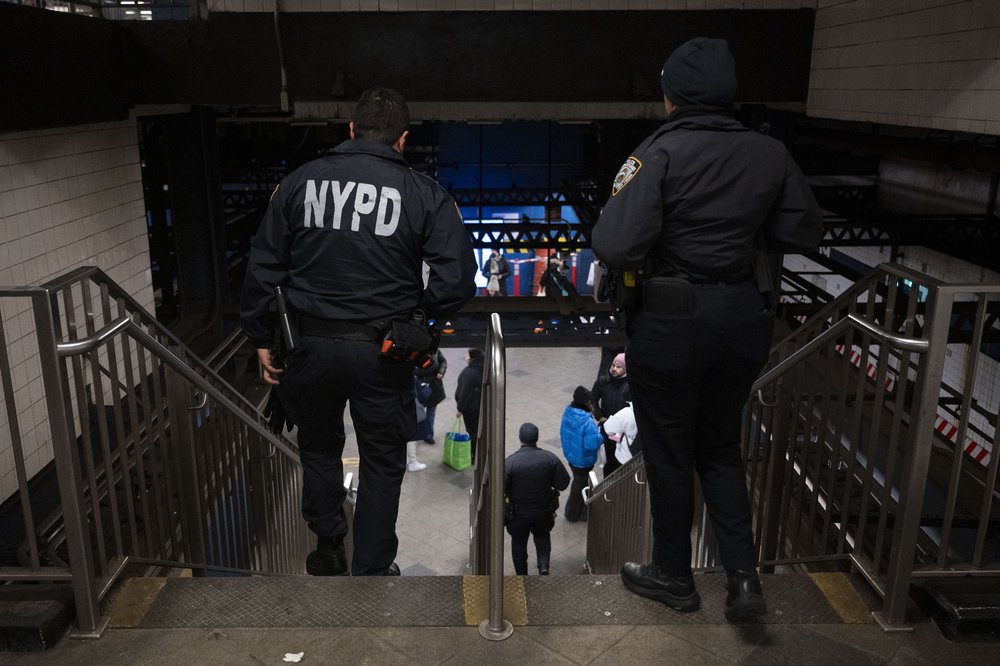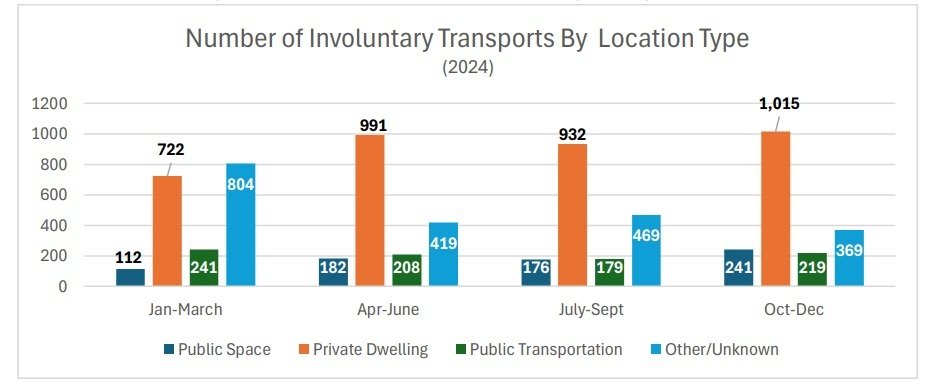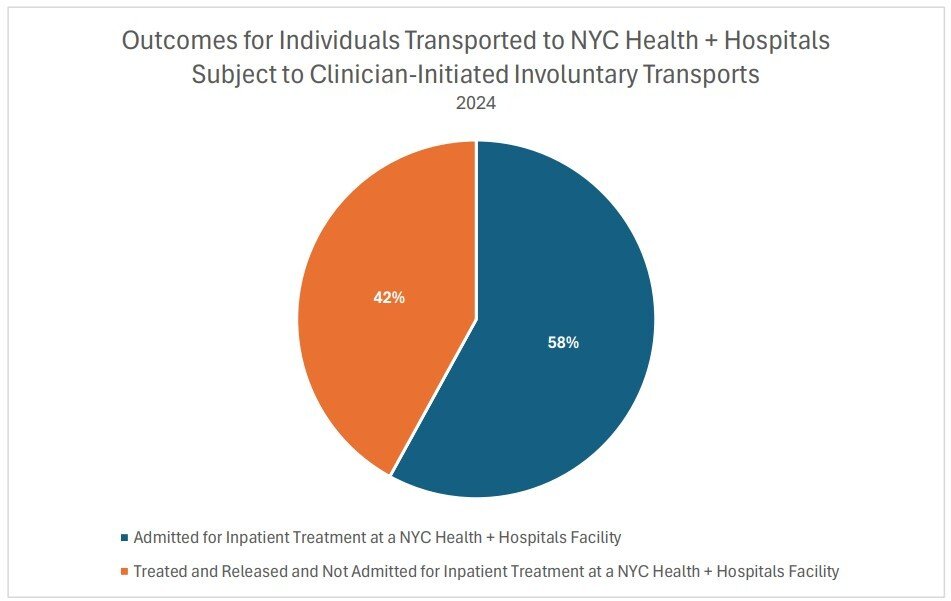Involuntary commitments start far more often in NYC's homes than public spaces, data shows
Feb. 3, 2025, 2:16 p.m.
A new city report offers a detailed picture of how involuntary hospitalization has worked under Mayor Adams.

Nearly 7,800 New Yorkers were taken to hospitals against their will for psychiatric assessments in 2024, according to a new report from the Mayor’s Office of Community Mental Health. These trips were much more likely to originate in people’s homes than in public places.
The city only collected data on outcomes for a small share of these trips — namely those involving patients sent by clinicians, rather than police, to public hospitals for a psychiatric assessments. Of those patients, the majority were released without being admitted for care.
Mayor Eric Adams has made involuntary hospitalization a key piece of his platform for addressing street homelessness and mental health, and the report paints the most detailed picture to date of how involuntary hospitalization has worked under his administration.
Adams frequently singles the measure out as a necessary tool to get people with mental health issues who are sleeping on the street or in the subway into care — whether they want it or not. He has advised police and clinicians to expand the circumstances in which they invoke their power to initiate involuntary hospital trips.
Adams’ efforts to expand involuntary hospitalization have received pushback from civil rights advocates and some in the mental health community, who say voluntary treatment should be prioritized.

The mayor’s office did not immediately respond to a request for comment Monday on the report’s findings.
There were 7,721 involuntary hospital trips in 2024, according to the report. The overwhelming majority, 7,060, were initiated by the NYPD, often after being dispatched to respond to 911 calls. Another 661 were initiated by psychiatrists, psychologists, social workers or other clinicians.
About half of these trips originated in private dwellings, while about 1 in 5 came from public spaces or public transportation. Manhattan was the borough with the most involuntary hospital transports, while Staten Island had the least.

Black New Yorkers made up a disproportionate share of those taken to the hospital involuntarily, the data shows. About 23% of the city’s population is Black, yet 54% of involuntary hospital trips last year were for Black patients. About a third of those taken to the hospital involuntarily were white. Race was not reported for all transports.
Once patients got to hospitals for psychiatric assessments, not all were admitted. Of those who arrived at public hospitals after clinician-initiated involuntary transports, 42% were admitted for psychiatric or medical care. The city doesn’t have similar data from private hospitals.
NYC Health and Hospitals did not immediately respond to a request for comment on these stats, and whether treatment standards or capacity issues play a role.
Adams changed the criteria for police and clinicians to initiate involuntary hospital transports in 2022, advising them to not only take those who present dangers to themselves or others, but also people who appear to have mental illness and to be unable to meet their own basic needs.
Gov. Kathy Hochul’s administration similarly issued new guidance at the time, saying that should also be the standard for hospitals to use when deciding whether to involuntarily commit patients for psychiatric care.
Both Hochul and Adams are now fighting for those standards to be enshrined in state law, along with other measures to allow for more involuntary hospitalization.
Gov. Hochul looks to expand forced hospitalization as Albany returns to session Adams made homeless sweeps a priority. Tracking their outcomes? Not so much. Adams' involuntary treatment policy faces first legal challenge NYC Mayor Adams has a mental health agenda. Will Albany play ball?